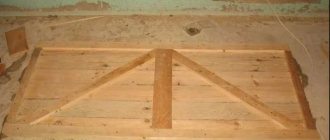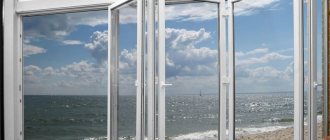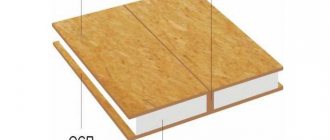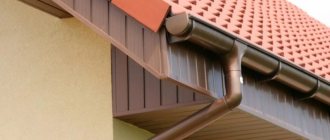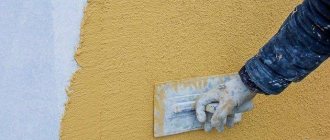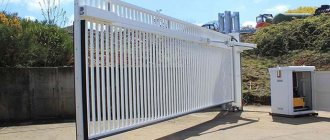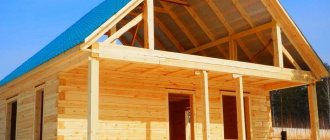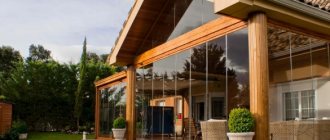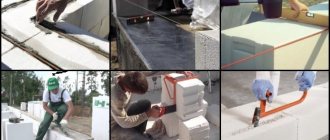Polystyrene concrete block
The topic of independent production of building materials is actively discussed among developers, and this is especially true for products intended for the construction and insulation of walls.
And this is not accidental. After all, home production will help not only to gain invaluable experience as a manufacturer, but will also help to significantly reduce the construction budget.
In this article we will understand how to make polystyrene concrete with our own hands. We will also get acquainted with the main properties and scope of application.
How to make polystyrene concrete at home?
To make polystyrene concrete at home, you will need the following materials and tools:
- concrete mixer or other container for preparing the mixture;
- necessary components;
- garden shovel and hoe;
- container for determining proportions, for example, a bucket.
For better plasticity of the mixture, you will still need detergent or cheap shampoo
Polystyrene concrete , which is made by hand, has the following composition and proportions:
- 1 part cement;
- 3 parts sand. You can use ordinary river sand, after sifting it;
- 6-8 parts of polystyrene (depending on what material characteristics need to be obtained);
- water at your discretion. Enough water is needed so that the mixture does not turn out to be too liquid, otherwise the polystyrene will simply float to the surface, and the finished material will be less durable. Also, there should not be too little water, otherwise the material will be subject to cracking;
- plasticizer optional. A detergent can act as a plasticizer.
The mixture can be mixed either in a forced-action concrete mixer or in a conventional cast-iron bath. If the mixture is prepared in a bathtub, then ordinary gardening tools, such as a hoe and a shovel, can be used to mix it .
Progress of work on the preparation of polystyrene concrete:
- A cement mixture with water is prepared in a concrete mixer;
- sifted sand is added;
- Polystyrene is poured in parts. Each part must first be mixed until smooth, after which the next one can be poured in;
- plasticizer is added. Usually a simple dishwashing detergent is used. In this case, the solution will be viscous and will not spread.
Please note that the mixture should not be liquid or dry. If the mixture turns out very dry, you can add more water.
Do-it-yourself polystyrene concrete may contain reinforcing fibers . They are so thin that they are evenly distributed throughout the polystyrene concrete mixture. Reinforcing fibers help prevent the occurrence of microcracks in the material , which are a consequence of shrinkage when the mixture hardens.
The volume of polystyrene is selected based on functionality: load-bearing walls require a smaller volume of foam granules in relation to the cement-sand mixture
Introduction to polystyrene concrete block: material characteristics
We will begin our review by studying the features of the composition of the material and its characteristics. After all, the future manufacturer needs to know everything about polystyrene concrete.
Composition and properties
This material appeared on the market relatively recently, but has already gained popularity. You may ask: what is it justified by? It's all about a special set of product characteristics that meet most of the requirements of modern construction.
These characteristics are formed and adjusted at the manufacturing stage, by changing the proportions of raw materials and adding specialized chemical components.
The main materials that make up polystyrene concrete are:
- Sand;
- Water;
- Cement;
- Polystyrene crumbs;
- Special additives (saponified resin, for example).
- It is recommended to use high grade cement: M400-500. The higher the grade, the stronger the product will be.
- The sand usually used is quartz.
- Polystyrene crumbs can be of different fractions, which also affects the result.
- Often a plasticizer is added to the mixture. Such an additive can increase the plasticity of the solution, and thereby prevent damage to products by cracking even at the production stage - or more precisely, during the solidification and drying of products.
Note! The remaining additives are purely individual in each specific case. Manufacturers, trying to distinguish their products by modernizing the recipe, add various chemical components to the solution that can improve the performance of the finished material.
Now briefly about the properties.
Material characteristics:
| Polystyrene concrete is one of the leaders in terms of its ability to retain heat. The thing is that the thermal conductivity coefficient can indeed be very low. This applies, of course, to the least durable products. Insulation with polystyrene concrete is extremely popular among homeowners, which is due precisely to the above fact. The minimum possible value is 0.05, and the maximum can reach 0.15 W*mS. |
| Polystyrene concrete can withstand both 100 and 150 cycles, which significantly exceeds the GOST requirement, which sets a minimum of 25 cycles. This requirement applies only to those products that are used in the construction of external walls of structures. Thermal insulation material is not subject to control in this regard, since frost resistance is not standardized for it. |
| It is immediately worth noting that the average density indicator is very unenviable, it is 150-600 kg/m3. The densest products can be used in the construction of walls, but only in low-rise buildings. |
| In general, the value is not bad, but polystyrene concrete still cannot be called a leader in this regard. |
| The water absorption level of polystyrene concrete is low, less than 5%.
|
| Above, we examined the constituent components of polystyrene concrete, and were able to finally verify the absolute environmental friendliness of the material. |
| The products can make the room partially soundproof. Of course, it will not be possible to completely isolate yourself from noise, but comfort will increase. |
| Polystyrene concrete is a heat-resistant material and does not interact with fire. |
| Polystyrene concrete shrinks, but its value is small. |
| This problem is typical for almost all representatives of lightweight concrete. Polystyrene concrete is also no exception: the level of its adhesion to finishing materials is somewhat reduced, which makes it necessary to increase it by treating the finished wall with primers or concrete contact. |
Varieties and scope of their application
As we have already found out, the density of polystyrene concrete can be different. This provided the basis for the emergence of a classification based on the area of application of the material in its various types.
- The most popular application of polystyrene concrete is insulation. The material is used not only in the form of blocks, but also in liquid form. For example, monolithic polystyrene concrete is used to construct screeds, insulate roofs, and fill frames.
In this case, the material does not need increased density, but the thermal conductivity indicator is especially important. This explains the name given to polystyrene concrete with a density of less than 400 kg/m3 - thermal insulation.
- If the goal is to erect a lightweight building, for example, in the form of an outbuilding, then thermal insulation and structural products can be used. Their density is quite enough for this. However, no heavy floors or complex roofs should be installed; the blocks will not withstand such a load.
- You can build a one-story house with an attic using structural and thermal insulation products. Their density grade reaches D600.
The range of polystyrene concrete products includes the following types of products:
- Wall blocks are used in the construction of walls. Such products must be subjected to subsequent cladding (finishing).
Dimensions of wall products
- Products with a facing side will not have to be finished, but only from the outside.
Polystyrene concrete block with facing side
- Wall panels are also produced from polystyrene concrete. They are used for installation of internal partitions.
Polystyrene concrete panels
- Lintels (reinforced) are mounted above window and door openings.
Polystyrene concrete lintels
- Ventilation products are a special type of blocks. They have special holes through which utility lines are wired.
How to make blocks with your own hands?
In order to set up the production of polystyrene concrete blocks from the resulting mixture, you must first make a mold for the blocks. You can make several forms at once to increase productivity.
To make the mold, you can use a regular edged board or even sheets of iron (steel) . The dimensions of the form must be selected based on the size of the block.
Dimensions of polystyrene concrete block:
- length - 595 mm;
- width – 295 mm;
- height – 375 mm.
The inner walls of the mold must first be lubricated with used machine oil so that the blocks can be easily removed. The bottom of the mold does not need to be sealed . In this case, work should be carried out on a flat surface.
Progress of work on the preparation of polystyrene concrete blocks:
- the manufactured form is placed on a flat surface, for example, a sheet of iron;
- the prepared polystyrene concrete mixture is poured into the mold;
- leave in this position for about 24 hours. The hardening time of the mixture depends on several factors, such as air temperature, activity of binders;
- after which the block is removed from the mold and placed in a cool place.
For their intended purpose in construction, manufactured plastic blocks can only be used 2-3 weeks after manufacture .
Advantages and disadvantages
Manufacturers of PSB cite the following advantages of the product:
- Thermal insulation . A 30 cm layer of polystyrene concrete is equivalent to 180 cm of brickwork, which significantly increases the energy efficiency of buildings built from it.
- Noise insulation and sound absorption. Polystyrene beads and closed cement pores are a good barrier to airborne noise. 30 cm of masonry reduces sound volume by 70 dB (at a frequency of 1 kHz).
- Plastic. PSB is one of the few types of concrete that can withstand high bending loads.
- Environmental friendliness. Food grade polystyrene is used to produce polystyrene concrete. It does not emit harmful substances, and its combustion products are low-toxic.
- Fire safety. Polystyrene balls are “sealed” inside cement; the material is classified as group G1.
- Manufacturability . PSB is subjected to sawing, drilling, milling, and other types of processing. Due to the low weight of the blocks, the construction of walls from them requires less labor than brick or cinder block masonry.
- Durability . Structural polystyrene concrete can withstand 200–300 freezing cycles, operates in the range from -60 to +75 °C, gains strength over time, and its estimated service life is 100 years without significant shrinkage. None of the PSB components are subject to rotting.
Consumers noted the disadvantages of PSB, which can be considered conditional:
- Low vapor permeability and increased hygroscopicity. When constructing façade enclosing structures, the use of external waterproofing and interior finishing is required. In buildings made of PSB it is necessary to install a supply and exhaust ventilation system. By following technology, it is possible to achieve high levels of indoor comfort.
- Low strength compared to heavy concrete. The choice of PSB grades allows you to solve all the problems of low-rise construction. The main thing is to correctly calculate the loads and select the material according to its load-bearing capacity.
The only obvious disadvantage of PSB, which is also characteristic of other porous concretes, is its weak ability to “hold fasteners” - screws and dowels. In this respect, it loses to wood concrete - lightweight concrete based on wood chips , but in other respects it does not lag behind or surpasses it.
You can read reviews and discussions about the properties of the material, its pros and cons, as well as what is better - wood concrete or polystyrene concrete - here and here.
Application of material in construction
The finished mixture, as well as blocks, can be used to build a house with your own hands. For example, you can build polystyrene concrete lintels for door and window openings. But it is necessary to understand that jumpers must necessarily contain reinforcement .
The advantages of polystyrene concrete lintels are that they do not rot or burn, compared, for example, with wooden ones, and are also not attacked by insects and rodents.
also install polystyrene concrete floors on the ground with your own hands without the involvement of additional labor and construction equipment. In this case, you can save a lot.
Polystyrene concrete lintels are made of dense material with mandatory reinforcement
First, you need to prepare the soil for pouring polystyrene concrete. For this purpose, a sand and gravel cushion is installed. After which you can divide the floor into small sections and fill each of them separately with polystyrene concrete.
Pros and cons of the material
Manufacturers of building materials have worked for a long time to obtain a durable, lightweight and affordable concrete product, which in terms of physical and technical characteristics is in no way inferior to other types of concrete. The result of this work was the invention of polystyrene concrete, to which light, granulated polystyrene began to be added instead of heavy crushed stone. Since then, the recipe has been improved, the blocks have become popular and have begun to be actively used for the construction of structures for any purpose.
Construction industry experts assure that expanded polystyrene concrete has many more advantages than disadvantages. The main advantages of lightweight material are:
- Eco-safety. The products do not contain toxic or chemical additives.
- Durability. If the production technology of polystyrene concrete meets the standards, and the operating conditions are met, a structure built from such blocks will last 70-100 years.
- Fire resistance. The building material can withstand high temperatures for a long time.
- High thermal insulation coefficient. In a room built from polystyrene concrete, a comfortable temperature is maintained even in cold winter, while energy costs are significantly reduced.
- Noise insulation.
- Easy to process, quick and easy to install masonry.
There is only one significant drawback of this universal building material - a decrease in the strength characteristics of the blocks after 20-23 cycles of freezing and thawing. If the surface constructed from polystyrene concrete block elements is not additionally treated with protective materials, cracks will gradually begin to form on the walls, and the masonry itself will collapse.
Price category
In principle, you will only have to buy polystyrene itself (PVG - foamed granular polystyrene) and dry cement . Typically, polystyrene is sold in bags, and the kit also includes a dry mixture, which in proportion is exactly one bag of polystyrene.
Price per cubic meter of polystyrene:
| Size (diameter) of granules | Price |
| 5-7 mm | 1300 rub. |
| 4-6 mm | 1800 rub. |
| 2-3 mm | 2800 rub. |
The smaller the polystyrene granules in size, the higher the price per cubic meter.
If you make all the calculations, you will find that producing polystyrene concrete or polystyrene concrete blocks yourself is many times more profitable than buying ready-made material . Moreover, making the material with your own hands is not so difficult.
For comparison, here is a table of ready-made plastic blocks offered by construction campaigns:
| Block size (LxWxH) | Price for 1 piece |
| 588x138x300 mm | 106 rub. |
| 588x92x300 mm | 51 rub. |
| 588x300x380 mm | 282 rub. |
| 588x188x300 mm | 139 rub. |
After the calculations have been made, you can compare what exactly the savings will be if you make polystyrene concrete blocks with your own hands.
Kneading process
When making your own solution for polystyrene concrete, the key is to obtain a homogeneous mass. This is the only way to achieve high strength and preserve other parameters throughout the entire depth of the monolith (even a separate block, even an entire wall).
When using the station there are no particular difficulties in such work, because the equipment is designed for this. True, it is still recommended to start by calculating the proportions to obtain concrete of the required grade.
Subsequent operations (using the example of a standard concrete mixer):
- Pour in polystyrene granules and fill the container with water. It takes some time for their surface to become wet (30-60 seconds of mixing). At first, 1/10 of the total volume of liquid is enough. It is better to immediately add a plasticizer to it if it is planned to be used in the future.
- Lay cement in full according to the recipe. If it is necessary to obtain material with density grade D600, quartz sand (pre-screened to remove large fractions and debris) is poured at the same stage.
- Pour in the remaining water with the addition of SDO (air-entraining compound) diluted in it in the form of a factory foaming agent or, as a last resort, liquid soap. If you have no experience in mixing polystyrene concrete, you should first add 8/10 of water, and the rest only if the mixture becomes too thick.
It remains to mix the solution for 3-5 minutes until a homogeneous mass is obtained, without “clumps” of polystyrene granules, sand or cement. Such a workable mixture can be unloaded into other containers for pouring forms for blocks or directly into the formwork of a foundation, wall, or screed. In the case of a concrete mixer, it is difficult to achieve continuity in the production of the solution, so you will have to weigh the possibilities of producing it in one shift (it is easier to work with a station, it produces on average the same amount per unit time).
There is another option - to lay the finished mixture. They are produced with markings indicating which brand of polystyrene concrete the proportions of components are designed for. The polystyrene granules in them are processed in advance, and the volume of cement and SDO additives is calculated exactly according to the recipe. In this case, the production speed will increase even when using a conventional concrete mixer. After all, it will be enough to just pour in the dry mixture, stir it for the set time and immediately change the filling.
In terms of labor costs, the production of polystyrene concrete is no different from its analogues, with other components as the main filler. Only the operational parameters differ - from the features of block installation (monolith pouring) to the characteristics of sound and thermal insulation, shrinkage, and maximum load capacity. For the sake of these distinctive features, they switch to polystyrene concrete.
BACK TO LIST
Useful tips from professionals
A polystyrene concrete mixture prepared by yourself can be used when pouring the floor of the second floor of a building . Excessive pressure on the ceiling will be minimized, because the polystyrene concrete mixture is quite light. In this case, it will be possible to avoid subsidence of the ceiling.
The smaller the size of the polystyrene granule, the denser, stronger and “colder” the finished material will be.
For greater strength, reinforcing fibers can be added to polystyrene concrete to make the material more durable and avoid microcracks.
Most of the properties of the finished material are determined by the quantity and quality of the polystyrene itself, as well as the size of the granules. But, despite this, the strength of polystyrene concrete largely depends on the amount of water in the mixture . Excessive amounts of water will reduce the strength of the material, and its lack can lead to the formation of cracks in the finished polystyrene concrete. Therefore, the addition of water must be carefully controlled.
In order to achieve greater productivity of the material, it is necessary to have a forced action concrete mixer. Its price is low, in addition, it can be built with your own hands. It is simply irreplaceable for large volumes of construction work. If you plan to build a small outbuilding, for example, a garage or a shed, then in this case you can get by with a small container for preparing the solution, for example, an old bathroom.
In order to avoid additional costs for quartz sand, ordinary river sand can be used . But you need to understand that before using sand, it must be sifted and cleaned of dirt and excess components.
Materials for production
The preparation of polystyrene concrete involves the use of a cement mixture and granulated polystyrene (it can be replaced with polystyrene foam). Such raw materials are characterized by high thermal insulation properties, which contribute to reliable protection of the building from freezing. Frost resistance indicators depend on the density of the concrete mixture and the main additives.
The list of necessary components for production looks like this:
- Cement mixture grade M400. If you use a higher grade composition, the solution must be diluted with sand in a 2:1 ratio.
- Expanded polystyrene. The component is sold in construction hypermarkets.
- SDO is a special additive that adds air to the mixture and promotes the appearance of air bubbles, which increase thermal insulation.
- Plasticizers. The concentration of these additives in the composition is determined by the characteristics of the mixture.
Equipment
The production of polystyrene concrete blocks is carried out without the participation of heavy equipment. However, to obtain a homogeneous composition, a concrete mixer is used. The shape for polystyrene concrete blocks is selected depending on the further application. Additionally, you should stock up on the following equipment:
- The generator is installed if it is necessary to produce from 20 to 25 cubic meters of solution. Thanks to this, it will be possible to ensure its supply without interruption.
- GOST 33929 2021 polystyrene concrete and its technical conditions require the presence of a generator during the manufacturing process of the monolithic version. It delivers the solution to the place where it is poured.
- Greater convenience and automation can be achieved through the use of a mobile installation. It has a significant drawback - high cost. It is advisable to purchase it for professional construction teams. Private needs cannot be covered in this way.
- Even with the participation of the equipment described above, you will need to manually determine the proportions per 1 m3 of polystyrene concrete.
There are also modern samples of equipment. They differ in power. Their use is only advisable in large enterprises:
- Conveyor type lines are fully automated. They are capable of producing more than one hundred cubic meters of finished material per day. The equipment allows us to achieve exceptional geometry of each block. At each stage of production, the quality of the finished material is checked.
- Stationary lines are compact and affordable. They are also installed in medium or small sized enterprises.
If a person is thinking about how to prepare polystyrene concrete himself for private needs, then it is not advisable to purchase equipment. The installations make it possible to produce polystyrene concrete for sale. They occupy about 100 sq. m. and allow you to get 80 cubic meters per day. m. of finished raw materials.
Useful tips
Strength depends on the granules that are used in polystyrene concrete. The strength of polystyrene concrete material will depend on what kind of granules are used. Experts have different opinions on this matter. Some recommend either purchasing crushed building material, or making your own device designed for “cutting” foam plastic.
Thus, you will be able to save half as much money, since the cost of the prepared ingredient is quite high. For private construction work, it is better to prepare two different solutions, the density of which should be 350 and 1200 kilograms per cubic meter. The first can be used to build partitions, create screeds, and use it as insulation. The second solution is perfect for building walls that are subject to strong pressure. If the operating conditions of the building material comply with the prescribed standards, the strength will increase over time. It is desirable that when mixing the density of the thermal insulation solution is D200.
Return to contents
